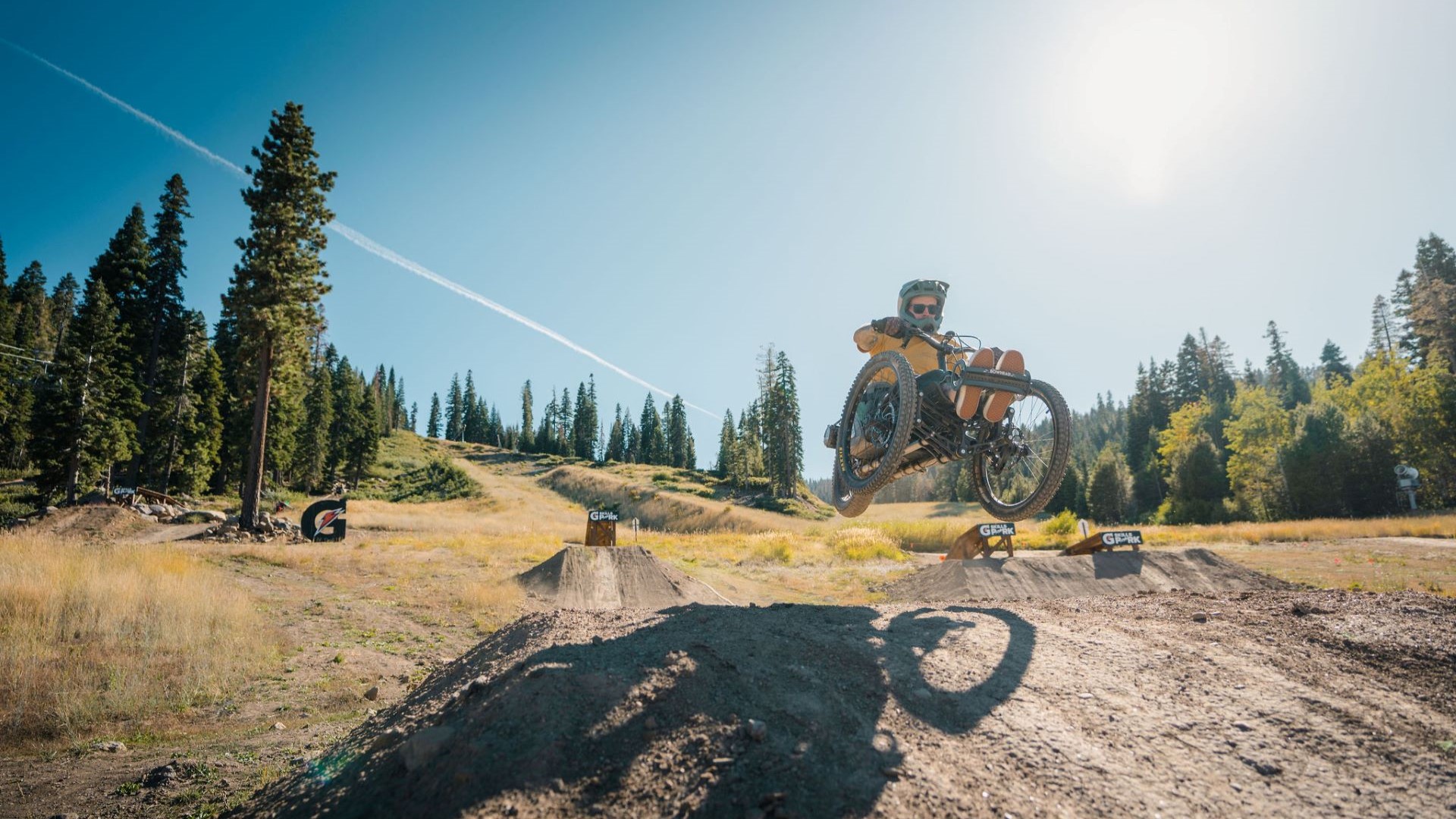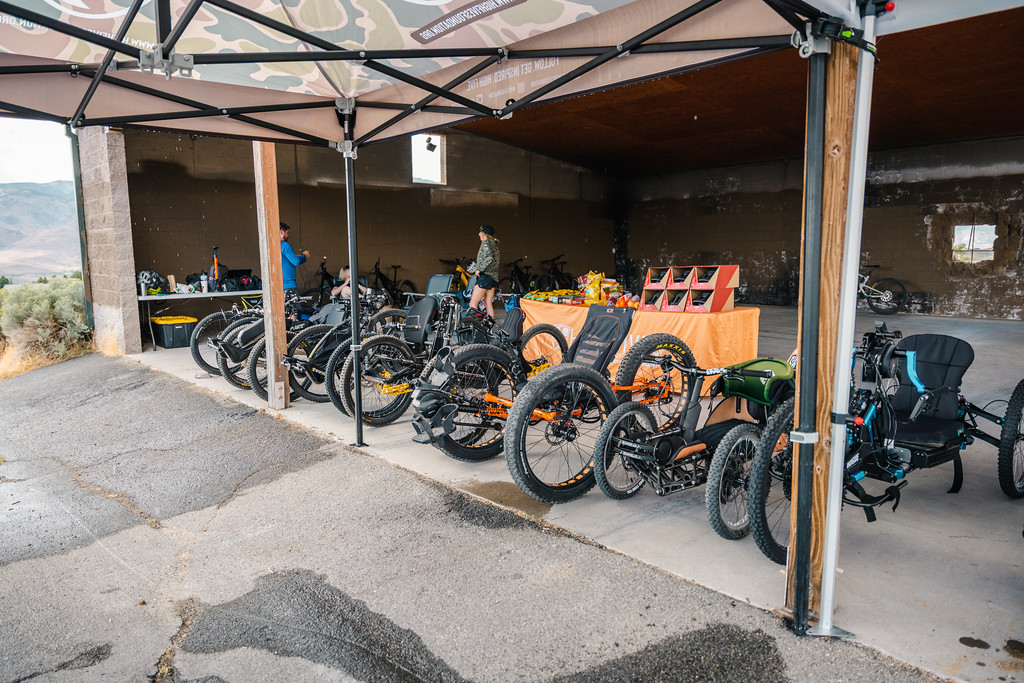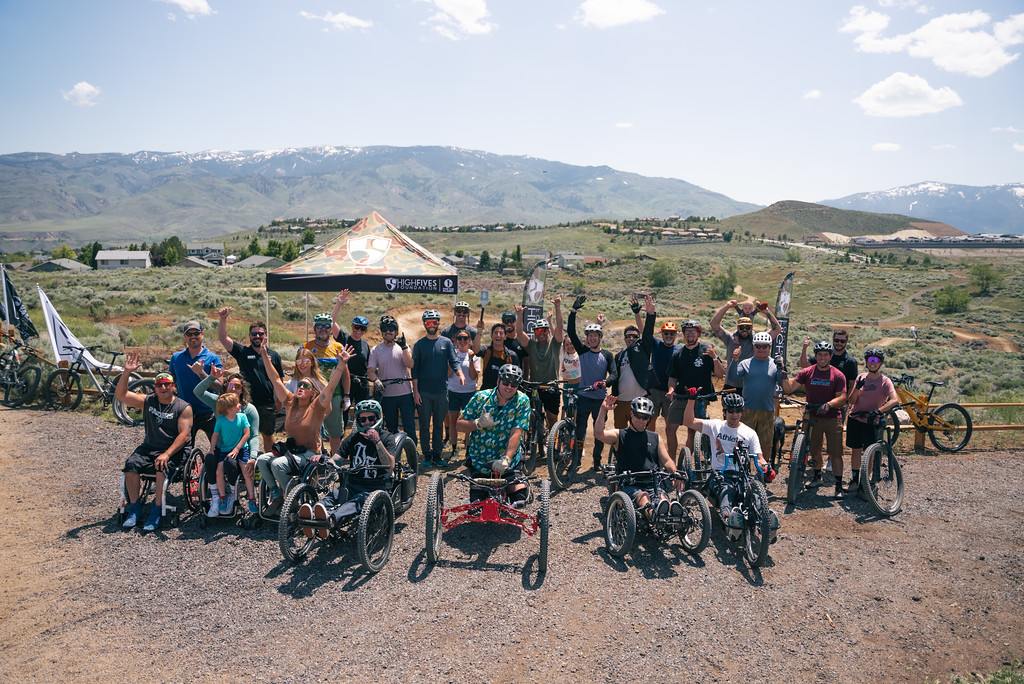
June 14, 2020 was a typical early summer day for Reno, Nevada-based Austin Price. The then 28-year-old spent the day hanging out with friends before cruising home on his motorcycle as he always did.
Three blocks from his home, he was coming around a sharp corner and navigating some roadwork when part of his motorcycle made contact with the change in the asphalt grading, high-siding him off the bike and into the air before making contact with an oncoming vehicle.
The next thing Price remembers is waking up in the hospital, a doctor standing beside him, holding his motorcycle helmet.
“The doctor said he had never seen a motorcyclist’s helmet look the way mine did and have its wearer still be alive,” Price tells Cycling Weekly “I sustained a T4 spinal cord injury, had burst fractures from T4 to T10, a traumatic brain injury, two skull fractures, a broken jaw, 13 facial fractures, a broken hip, a collapsed lung and 13 broken ribs.”
The doctor considered him lucky for still being alive but for Price, it took a bit to see it that way. While the many fractures would heal, the spinal cord injury meant he would be paralyzed from the sternum down with no core or trunk support. Price would not only be unable to walk or to ride a traditional motorcycle again - moving forward, all of his strength and function would need to come from his chest, arms and upper back.
“Before my injury, I was really into downhill mountain biking, BMX riding and mountain biking on the many trails here in Reno,” Price says. “To find out post-accident that I would be in a wheelchair and my life would be so different… I felt like my life was over.”
Roy Tuscany, founder and CEO of Lake Tahoe-based nonprofit the High Fives Foundation reached out to Price in the weeks following Price’s accident.
Tuscany, a former elite downhill skier, had himself suffered a spinal cord injury that left him unable to use his feet and calves with the same range of motion and ability as before his injury. Tuscany founded the High Fives Foundation in 2009 to provide adaptive sports equipment and experiences to fellow spinal cord injury survivors
“It was really nice to be able to make contact with somebody who understood what I was going through at the time,” Price says. “You have so many unknowns in the weeks after an injury like this. You basically have to relearn your entire life.”
Tuscany was also able to offer Price a little bright light at the end of his recovery tunnel: he’d be able to ride bikes again, albeit somewhat differently.
One sport the High Fives Foundation supports is adaptive mountain biking - among others such as skiing, snowboarding, surfing and fishing.
Tuscany explains that of the sports that can be made adaptable to a variety of abilities, biking is high on the list.
“Our adaptive bike programs are our fastest-growing programs across the organization,” Tuscany says. “We’ve now given grants for 225 adaptive mountain bikes, which is our largest vertical of adaptive equipment that we give to athletes.”
Additionally, the High Fives Foundation partnered with renowned trail builder Steve Wentz to create a network of Reno-area trails that meet the 58 inch-wide and no pinch point turns requirements needed to comfortably accommodate adaptive mountain bikes.
The three trail systems are: Sky Tavern, Sierra Vista Park and Sawtooth, all located in or near Reno.
The High Fives Foundation also hosts daylong and multi-day adaptive mountain biking camps in four locations across the U.S. - Vermont, Nevada, California and Colorado.
“We have all the necessary equipment on-hand for athletes to test out at our camps, including Bowhead adaptive mountain bikes,” Tuscany says. “Athletes can come and try out the equipment, ride the trails and if they decide they want to pursue the sport further, can apply for a grant with High Fives to purchase their own adaptive mountain bike - which can range from $12,000 to $30,000.”
Price attended his first High Fives mountain bike camp in July 2022, and was instantly hooked on adaptive mountain biking.
“I remember sitting at the top of the run at Sky Tavern in an adaptive mountain bike by myself and that was the first feeling I’d had post-accident of not feeling like I was disabled or in a wheelchair. At that moment, I felt free,” recalls Price.
Price continued to hone his adaptive mountain bike skills by attending other bike camps with High Fives and challenging himself to keep up with more advanced riders. Today, Price can be found shredding even the most tactical of adaptive trails and landing daunting jumps on the trails in Reno.
“I’m actually in the best shape of my life - but in a wheelchair, which is like, super ironic,” Price says with a laugh. “My whole mindset changed when I got on a Bowhead adaptive mountain bike - finding the adaptive mountain biking community through High Fives means everything. We’re not confined to wheelchairs. We’re out here hitting jumps and slashing berms. I’d say my life today is better than it was pre-injury for sure.”
Paying it forward, Price is also serving as a mentor for other spinal cord injury survivors.
“I’m not going to sugarcoat it - getting back out there on an adaptive mountain bike will be scary, but it will be so worth it,” Price says. “Everyone at the High Fives camps and in the adaptive mountain biking community are so accepting. We understand all the things you’re scared or even embarrassed about - and we don’t judge. We want everyone to be able to get back out on the trails and to get that sense of loving life again.”
About the bikes

Calgary-based adaptive mountain bike manufacturer Bowhead was founded in 2018 by Christian Bagg, a former big-air snowboarder who broke his back during a 1996 competition and was paralyzed from the waist down.
Bagg was not one to let his injury sideline him from doing what he loved most: hitting the slopes. As a lifelong lover of tinkering and inventing, Bagg quickly realized that traditional adaptive skis would benefit from a design that incorporated articulating joints, allowing for greater stability and steering - but his dedication to off-road sports soon sparked another interest: adaptive mountain biking.
“And then one day in the summer, Bagg looked at the adaptive skis he’d built using the articulating joints and thought, ‘What if I flip the skis over and put wheels on this?’, and that’s how the first Bowhead adaptive bike was made,” says Sally Stanier, community relations manager at Bowhead. “Bagg never intended to make models to sell, but when another man who had a similar injury to Bagg reached out about having Bagg make him an adaptive mountain bike, it sparked the desire to turn Bagg’s tinkering on adaptive bikes into a business.”
Each Bowhead bike features a single rear wheel behind a chair-like seat, which is connected to an articulating front end made up of two wheels and hand cranks. The rider’s legs sit outstretched between the two front wheels.
Stanier explains that Bowhead’s use of an articulating front end on all of their adaptive mountain bikes is what sets them apart.
“The articulating front end allows riders to lean into corners while maintaining control of the bike, which makes riding both fun and safe,” Stanier says. “Thanks to the articulating front end, out bikes are only as wide as conventional mountain bike handlebars, which means Bowhead adaptive mountain bikes can sit on nearly any mountain bike trail, which opens up a whole world of riding for our adaptive athletes.”
All of Bowhead’s current bikes use “e-assist” to help riders get the most out of their adaptive mountain bike.
“On average, your arms can generate about a quarter of the watts that your legs can,” Stanier explains. “Our bikes don’t have gears, but there are five different power modes that will assist you a bit more at each level. This allows our riders to be able to ride steeper trails and truly get the most out of their adaptive mountain biking experience.”
All Bowhead bikes feature full, independent suspensions on each wheel and two brakes: one brake lever that controls the two front wheels simultaneously and one that controls the rear wheel.
Additionally, each Bowhead bike is custom-made to fit its rider’s needs and measurements.
“When a bike order comes in, we have a call with the rider to confirm their specs and their needs - some riders may not be able to use both hands or arms equally and may need adjustments to the hand cranks, for example,” Stanier says. “We also only use quality mountain bike components and Bosch motors when assembling our bikes.”
Stanier says that while the company recognizes their bikes are a significant financial investment, the high level of care and specificity that comes with each order is what makes Bowhead unique.

In 2023, High Fives contributed funding to more than 60 adaptive bikes through the Empowerment Fund grant program. There are three grant award cycles per year, and interested athletes can find out more information and apply for a grant here.







